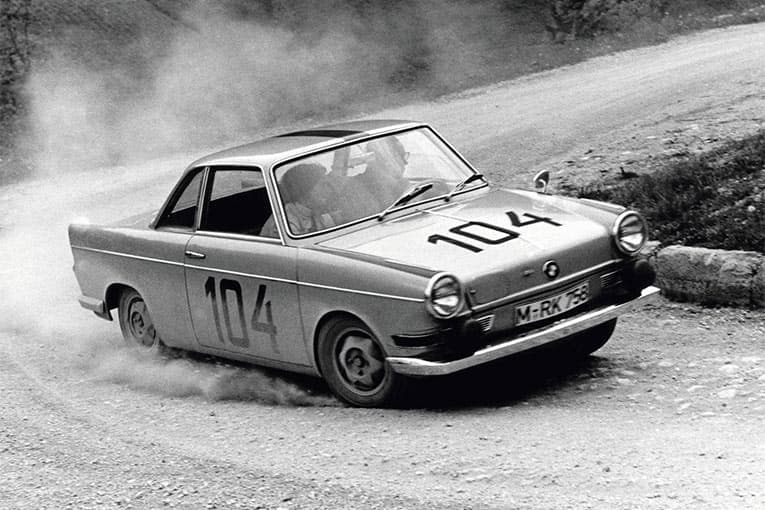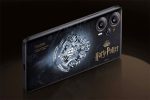The sporting qualities of the BMW 700 Coupé came out quite clearly from the start, shortly after the beginning of the car’s production in July 1959: The first Coupés were to be admired on the track before the end of the year, for example in the Sahara-Lappland Rally. In 1960 BMW’s fast Coupés brought home both gold medals and titles, Hans Stuck clinching the German Hill-Climbing Championship once again at the wheel of a BMW 700 at the age of 60.
This clearly created significant demand among many customers for an even more powerful engine, with the big day coming in summer 1961, when BMW proudly presented the BMW 700 Sport to the press at the Nürburgring Race Track. With its compression ratio increased to 9:1, an even more dynamic camshaft and Solex twin-carburettors supplying the fuel, the two-cylinder boxer engine now developed 40 hp at 5,700 rpm. This sporting package was rounded off by an optional sports gearbox and an even harder suspension featuring firmer dampers and an anti-roll torsion bar. The power unit, in turn, was sufficient for acceleration to 100 km/h in just under 20 seconds and a top speed of 135 km/h or 84 mph. All the customer had to pay for this extra driving pleasure was DM 550,–
This “hot” version of the BMW 700 quickly became a legend in the early ’60s particularly in motorsport, and was lauded by fans as the “little fighter”. And indeed, at its time the car put up some exciting duels against competitors from both Steyr-Puch and Abarth.

Racing machine with a tubular spaceframe and an aluminium body: the BMW 700 RS
Moving on to works racing, BMW prepared two truly outstanding performers parallel to one another: the 700 GT in 1960 and, a year later, the BMW 700 S. “When a new BMW sports car, the BMW 700 RS enters the Rossfeld Hillclimb Race on 18 June 1961, this will be in a quest to test the driving qualities of the BMW 700 at higher speeds and under more dynamic conditions,” said the announcement. The fact that this was indeed no more than a test is obvious, considering that the BMW 700 RS, in making its debut in the sports car category up to 1600-cc, was competing against the likes of the Porsche Spyder and the Porsche RSK, to mention only two formidable rivals.
BMW’s small racing machine boasted a tubular spaceframe and an aluminium body, with 70 hp coming from the side-shaft power unit and with the complete vehicle weighing less than 600 kg or 1,323 lb. Depending on the transmission ratio, this small but dynamic performer was able to reach a top speed between 150 and 200 km/h (93 and 124 mph) – enough for Walter Schneider to bring home the German Circuit Championship in 1961 at the wheel of a BMW 700 RS.
The dynamic BMW 700 remained seriously competitive and in most cases even superior for years to come, boasting various levels of tuning and engine power. And when BMW’s two-cylinder sports car finally reached the end of its career, Hubert Hahne, one of the big stars at the time in touring car racing, had brought home the majority of his wins in this outstanding performance model. At the same time the BMW 700 had already become the ideal car for young drivers making their first appearance in racing at the time. A very good example is Hans-Joachim Stuck, who has great memories of this great car: “I was just nine years old when I accompanied my father to drivers’ courses held by Scuderia Hanseat at the Nürburgring race track. And there I was able to drive a BMW 700 myself, since it was a closed circuit reserved entirely for our racing activities.”










